Emergency
During a power outage, homeowners and businesses make use of an Emergency Generator to keep the lights on and critical appliances working. The generator usually powers only the most critical circuits and necessities.
Emergency Generator
Homeowners and businesses make use of portable emergency generator to keep the lights on and critical appliances working. The generator usually powers only the most important circuits necessary.
Need Power in an outage? Most people do. Refrigerators and freezers gradually get warm. Sump pumps stop working. Medical equipment* doesn’t do its job. Home Wi-Fi shuts down. An Emergency Generator provides power for all the critical and essential appliances necessary to keep a home or small business safe.
When the power goes out, many small businesses can’t do business. A small office or retail location can keep their doors open with an Emergency Power Generator. It takes a few minutes to set up, but once the generator is running, small appliances and lights have power. It could mean the difference between keeping customers or letting them walk away to obtain goods and services somewhere else.
Selecting an Emergency Power Generator
Choose an emergency power generator that exceeds your current needs by about 15 to 25 percent. Operating a generator at 100 percent capacity shortens its life while limiting the load to 75 percent capacity for most of the run time extends generator life. Owners encounter fewer breakdowns and enjoy better fuel economy.
Follow the Power Expert Sizing Guides for advice and tips about choosing a generator. A portable emergency generator keeps the lights on and essentials powered in homes and small businesses.
Emergency Power Generator for Home
If you need the furnace or air conditioning to run, invest in a manual transfer switch. During installation, choose the most important circuits to power like A/C, furnace, refrigerator, freezer, microwave, lights, and Wi-Fi. When a power outage hits, start the generator in a safe place. Connect the generator cord to the inlet box and turn on the generator main breaker. At the manual transfer switch, turn off all the breakers before switching to generator power. Starting with the heaviest load (usually air conditioning,) turn on the breakers one at a time.
Now your emergency generator can supply power to your most important circuits.
*Portable Emergency Generators are NOT suitable for life support functions.
Featured Emergency Generators at Norwall
These are some of the most popular Emergency generator models at Norwall.
Dual Fuel—Remote Start—7600 Running Watts—68 dBA Quiet—4 Solid Wheels | |
Dual Fuel–Remote Electric Start—7500 Running Watts—EPA, CARB, USFS Compliant | |
Remote Start–Low 52 dBA Noise–Excellent Fuel Economy: one tank runs 18 hours | |
Remote Start–EPA, CARB emissions–16 hr run on 10 gallons–Transfer Switch Ready | |
Gas–LP–NG; Electric Start–CO Shield–EPA, CARB certified–up to 8000 Running Watts. |
-
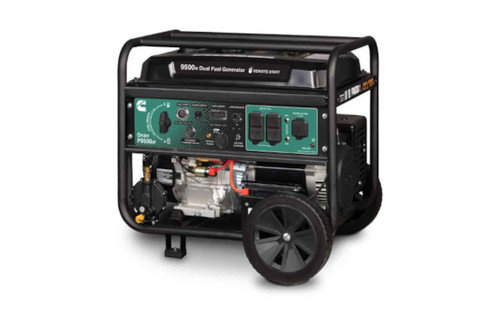
Model #: P9500df
Cummins Onan 9500 Watt Dual Fuel Remote Electric Start Portable Generator | P9500df
Norwall's Low Price
$1,131.00 -

Model #: 7676
Generac GP8000E Electric Start Generator with CO Sense and 50-State Emissions | 7676
Norwall's Low Price
$1,149.00 -
Sale!
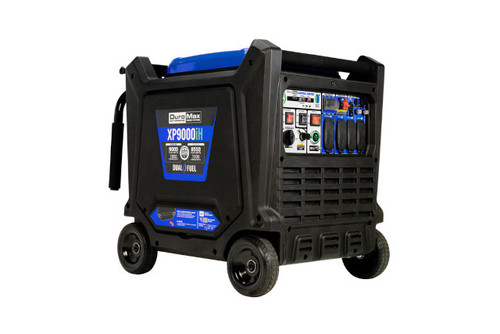
Model #: XP9000iH
DuroMax 9000 Watt Inverter Generator Dual Fuel Remote Start | XP9000iH
Regular Price $2,599.00Norwall's Sale Price
$2,099.00 -

Model #: 7706
Generac 18000 Watt Portable Generator Electric Start with CO Sense Technology | 7706
Norwall's Low Price
$4,399.00 -

-
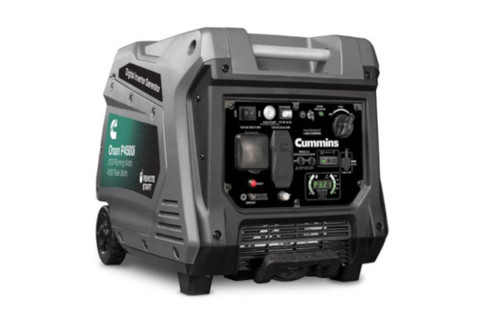
Model #: P4500i
Cummins Onan 4500 Watt Digital Inverter Gasoline Generator Remote Start | P4500i
Norwall's Low Price
$1,267.00 -

Model #: 7705
Generac 15000 Watt Generator with COSense Automatic Carbon Monoxide Shutdown GP15000EFI | 7705
Norwall's Low Price
$3,999.00 -

Model #: WGen9500c
Westinghouse 9500 Watt Generator with Automatic Carbon Monoxide Shutdown | WGen9500c
Norwall's Low Price
$1,149.00 -
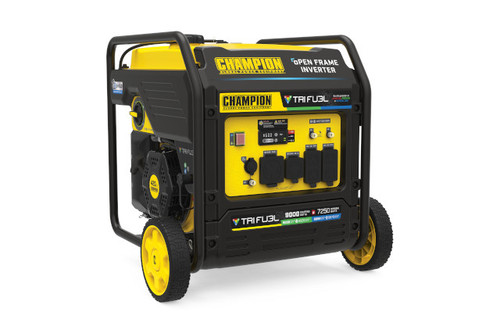
Model #: 201176
Champion 9000 Tri-Fuel Inverter Generator with CO Shield | 201176
Norwall's Low Price
$1,569.00 -

Model #: P2500i
Cummins Onan P2500i Inverter Generator 2500 Watt | P2500i
MSRP Price: $849.00Norwall's Low Price
$697.00 -

Model #: WGen5300DFc
Westinghouse 5300 Watt Dual Fuel Generator RV Ready + Remote Start and Automatic Carbon Monoxide Shutoff | WGen5300DFc
Norwall's Low Price
$749.00 -
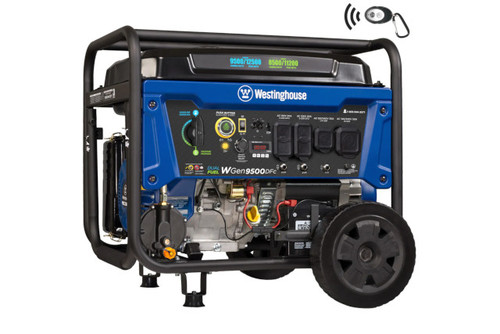
Model #: WGen9500DFc
Westinghouse 9500 Watt Dual Fuel Generator with Automatic Carbon Monoxide Shutdown | WGen9500DFc
Norwall's Low Price
$1,249.00
-

Model #: P9500df
View DetailsNorwall's Low Price
$1,131.00 -

Model #: 7676
View DetailsNorwall's Low Price
$1,149.00 -
Sale!

Model #: XP9000iH
View DetailsRegular Price $2,599.00Norwall's Sale Price
$2,099.00 -

Model #: 7706
View DetailsNorwall's Low Price
$4,399.00 -

Model #: 7682
View DetailsNorwall's Low Price
$999.00 -

Model #: P4500i
View DetailsNorwall's Low Price
$1,267.00 -

Model #: 7705
View DetailsNorwall's Low Price
$3,999.00 -

Model #: WGen9500c
View DetailsNorwall's Low Price
$1,149.00 -

Model #: 201176
View DetailsNorwall's Low Price
$1,569.00 -

Model #: P2500i
View DetailsMSRP Price: $849.00Norwall's Low Price
$697.00 -

Model #: WGen5300DFc
-

Model #: WGen9500DFc
View DetailsNorwall's Low Price
$1,249.00
During a power outage, homeowners and businesses make use of an Emergency Generator to keep the lights on and critical appliances working. The generator usually powers only the most critical circuits and necessities.
Emergency Generator
Homeowners and businesses make use of portable emergency generator to keep the lights on and critical appliances working. The generator usually powers only the most important circuits necessary.
Need Power in an outage? Most people do. Refrigerators and freezers gradually get warm. Sump pumps stop working. Medical equipment* doesn’t do its job. Home Wi-Fi shuts down. An Emergency Generator provides power for all the critical and essential appliances necessary to keep a home or small business safe.
When the power goes out, many small businesses can’t do business. A small office or retail location can keep their doors open with an Emergency Power Generator. It takes a few minutes to set up, but once the generator is running, small appliances and lights have power. It could mean the difference between keeping customers or letting them walk away to obtain goods and services somewhere else.
Selecting an Emergency Power Generator
Choose an emergency power generator that exceeds your current needs by about 15 to 25 percent. Operating a generator at 100 percent capacity shortens its life while limiting the load to 75 percent capacity for most of the run time extends generator life. Owners encounter fewer breakdowns and enjoy better fuel economy.
Follow the Power Expert Sizing Guides for advice and tips about choosing a generator. A portable emergency generator keeps the lights on and essentials powered in homes and small businesses.
Emergency Power Generator for Home
If you need the furnace or air conditioning to run, invest in a manual transfer switch. During installation, choose the most important circuits to power like A/C, furnace, refrigerator, freezer, microwave, lights, and Wi-Fi. When a power outage hits, start the generator in a safe place. Connect the generator cord to the inlet box and turn on the generator main breaker. At the manual transfer switch, turn off all the breakers before switching to generator power. Starting with the heaviest load (usually air conditioning,) turn on the breakers one at a time.
Now your emergency generator can supply power to your most important circuits.
*Portable Emergency Generators are NOT suitable for life support functions.
Featured Emergency Generators at Norwall
These are some of the most popular Emergency generator models at Norwall.
Dual Fuel—Remote Start—7600 Running Watts—68 dBA Quiet—4 Solid Wheels | |
Dual Fuel–Remote Electric Start—7500 Running Watts—EPA, CARB, USFS Compliant | |
Remote Start–Low 52 dBA Noise–Excellent Fuel Economy: one tank runs 18 hours | |
Remote Start–EPA, CARB emissions–16 hr run on 10 gallons–Transfer Switch Ready | |
Gas–LP–NG; Electric Start–CO Shield–EPA, CARB certified–up to 8000 Running Watts. |
